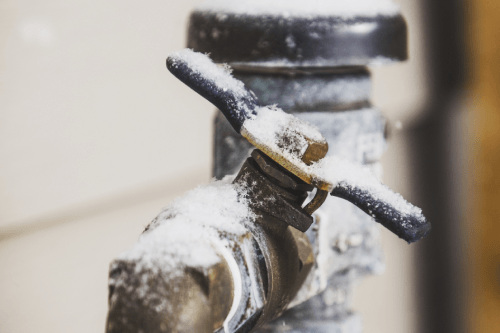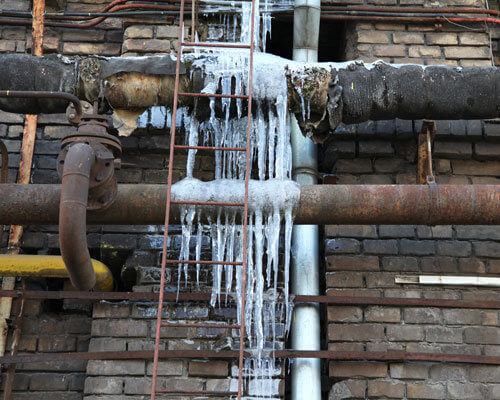Crucial Advice for Preventing Frozen Plumbing in Winter Conditions
Crucial Advice for Preventing Frozen Plumbing in Winter Conditions
Blog Article
Listed here in the next paragraphs you can get a good deal of amazing insight related to How To Avoid Freezing Pipes.

Cold weather can wreak havoc on your pipes, specifically by freezing pipelines. Right here's exactly how to prevent it from happening and what to do if it does.
Introduction
As temperature levels decline, the danger of frozen pipelines rises, potentially leading to pricey repair work and water damages. Comprehending exactly how to avoid frozen pipes is important for house owners in chilly environments.
Comprehending Frozen Pipelines
What causes pipelines to freeze?
Pipes ice up when subjected to temperature levels below 32 ° F (0 ° C) for expanded periods. As water inside the pipelines ices up, it expands, taxing the pipeline walls and possibly creating them to burst.
Threats and damages
Frozen pipelines can lead to water system disturbances, home damages, and pricey repairs. Burst pipes can flooding homes and create considerable structural damage.
Signs of Frozen Pipeline
Determining frozen pipes early can prevent them from rupturing.
Exactly how to determine icy pipes
Try to find reduced water flow from faucets, unusual smells or sounds from pipelines, and visible frost on revealed pipes.
Prevention Tips
Insulating vulnerable pipelines
Cover pipes in insulation sleeves or use warmth tape to secure them from freezing temperatures. Focus on pipelines in unheated or external areas of the home.
Home heating methods
Keep indoor areas sufficiently heated, specifically areas with pipes. Open closet doors to enable warm air to flow around pipes under sinks.
Securing Exterior Plumbing
Garden pipes and outdoor taps
Disconnect and drain pipes garden tubes before winter. Mount frost-proof faucets or cover outdoor taps with protected caps.
What to Do If Your Pipelines Freeze
Immediate actions to take
If you believe frozen pipelines, keep taps open to relieve stress as the ice melts. Utilize a hairdryer or towels taken in hot water to thaw pipelines gradually.
Long-Term Solutions
Structural modifications
Take into consideration rerouting pipes away from outside walls or unheated areas. Add added insulation to attic rooms, basements, and crawl spaces.
Upgrading insulation
Purchase high-grade insulation for pipelines, attic rooms, and walls. Proper insulation helps keep regular temperatures and reduces the risk of frozen pipelines.
Conclusion
Preventing frozen pipelines calls for aggressive steps and quick responses. By recognizing the reasons, indications, and preventive measures, property owners can protect their pipes throughout cold weather.
5 Ways to Prevent Frozen Pipes
Drain Outdoor Faucets and Disconnect Hoses
First, close the shut-off valve that controls the flow of water in the pipe to your outdoor faucet. Then, head outside to disconnect and drain your hose and open the outdoor faucet to allow the water to completely drain out of the line. Turn off the faucet when done. Finally, head back to the shut-off valve and drain the remaining water inside the pipe into a bucket or container. Additionally, if you have a home irrigation system, you should consider hiring an expert to clear the system of water each year.
Insulate Pipes
One of the best and most cost-effective methods for preventing frozen water pipes is to wrap your pipes with insulation. This is especially important for areas in your home that aren’t exposed to heat, such as an attic. We suggest using foam sleeves, which can typically be found at your local hardware store.
Keep Heat Running at 65
Your pipes are located inside your walls, and the temperature there is much colder than the rest of the house. To prevent your pipes from freezing, The Insurance Information Institute suggests that you keep your home heated to at least 65 degrees, even when traveling. You may want to invest in smart devices that can keep an eye on the temperature in your home while you’re away.
Leave Water Dripping
Moving water — even a small trickle — can prevent ice from forming inside your pipes. When freezing temps are imminent, start a drip of water from all faucets that serve exposed pipes. Leaving a few faucets running will also help relieve pressure inside the pipes and help prevent a rupture if the water inside freezes.
Open Cupboard Doors
Warm your kitchen and bathroom pipes by opening cupboards and vanities. You should also leave your interior doors ajar to help warm air circulate evenly throughout your home.

As a fervent reader on How to prepare your home plumbing for winter weather, I assumed sharing that piece of content was a good idea. In case you liked our blog post kindly do not forget to share it. I recognize the value of reading our article about Preventing and dealing with frozen pipes.
Call Today Report this page